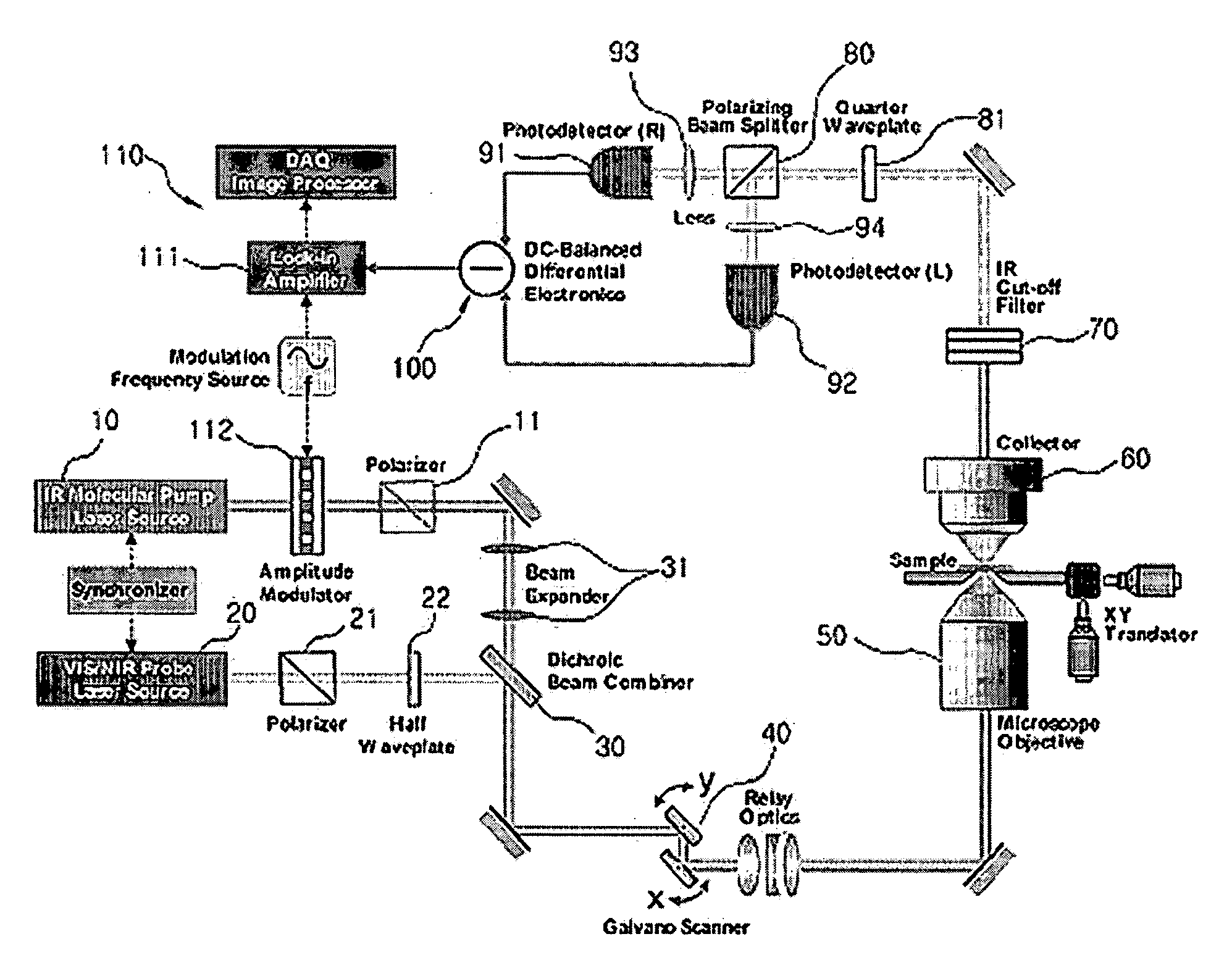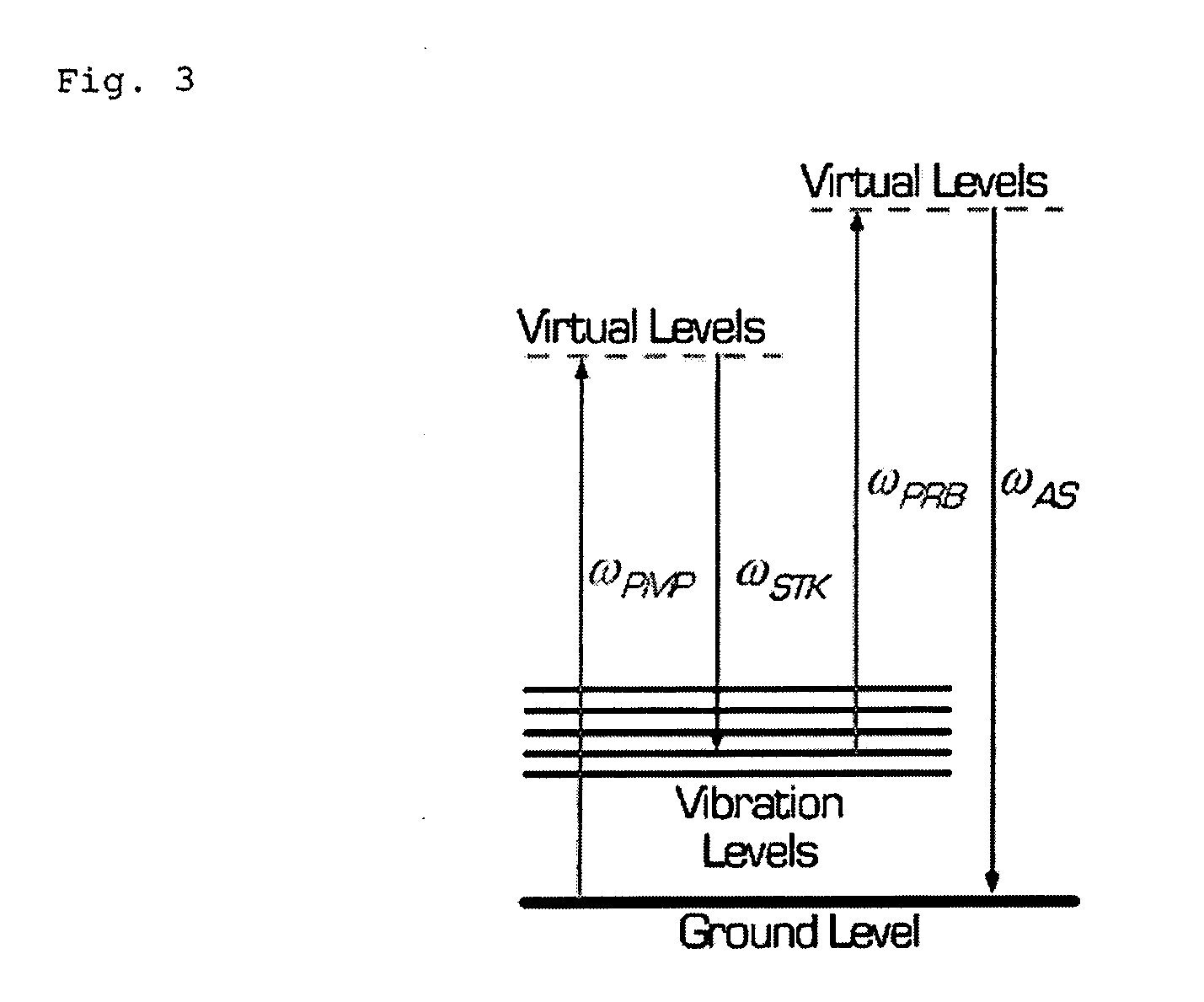Imaging Apparatus for IR Four-Wave Mixing Polarization Microscopy
a polarization microscope and imaging apparatus technology, applied in the field of ir four-wave mixing polarization microscopes, can solve the problems of insufficient optical contrast between molecular chemical species, inability to selectively measure the spatial distribution of molecular chemical species, and difficulty in obtaining clear morphological images of various intracellular organs and materials in the sample, etc., to achieve serious lowering of spatial resolution
- Summary
- Abstract
- Description
- Claims
- Application Information
AI Technical Summary
Benefits of technology
Problems solved by technology
Method used
Image
Examples
Embodiment Construction
[0037]
10: pump beam source20: probe beam source11, 21: polarizer30: beam combiner40: scanner50: optical focusing system60: collecting optical system70: dichroic beam splitter80: polarizing beam splitter91, 92: photodetector100: polarization differential detector110: data analyzer
Best Mode for Carrying Out the Invention
[0038]Practical and presently preferred embodiments of the present invention are illustrated as shown in the following Examples and Comparative Examples.
[0039]However, it will be appreciated that those skilled in the art, on consideration of this disclosure, may make modifications and improvements within the spirit and scope of the present invention.
[0040]FIG. 4 is a diagram of laser-sample interaction energy level and transition which are proposed by an IR four-wave mixing polarization differential detection according the present invention.
[0041]In obtaining a selective spectroscopic signal with respect to a certain molecular vibration, if a laser having a frequency ω...
PUM
 Login to View More
Login to View More Abstract
Description
Claims
Application Information
 Login to View More
Login to View More - R&D
- Intellectual Property
- Life Sciences
- Materials
- Tech Scout
- Unparalleled Data Quality
- Higher Quality Content
- 60% Fewer Hallucinations
Browse by: Latest US Patents, China's latest patents, Technical Efficacy Thesaurus, Application Domain, Technology Topic, Popular Technical Reports.
© 2025 PatSnap. All rights reserved.Legal|Privacy policy|Modern Slavery Act Transparency Statement|Sitemap|About US| Contact US: help@patsnap.com



